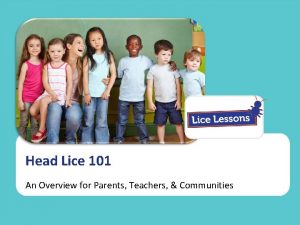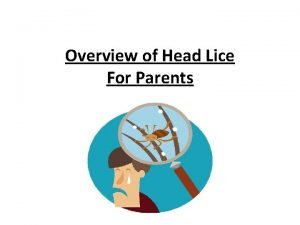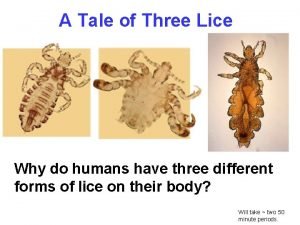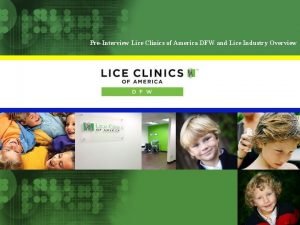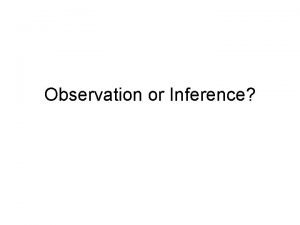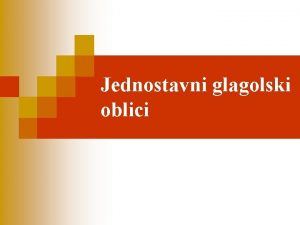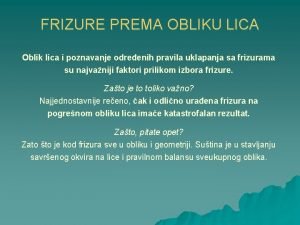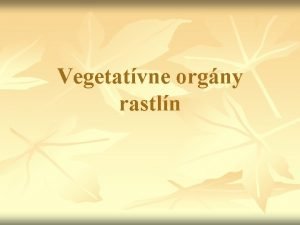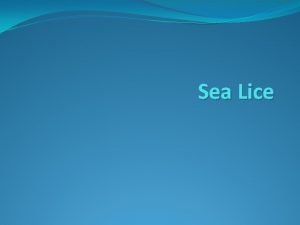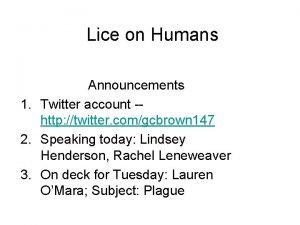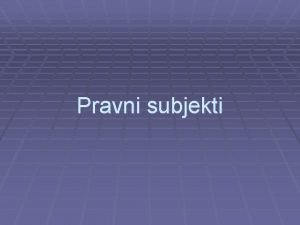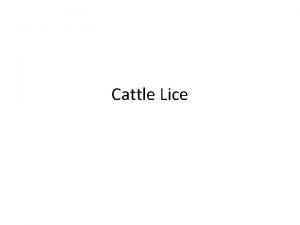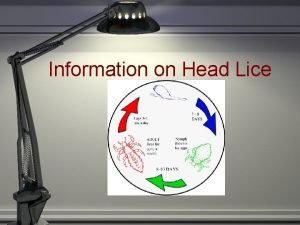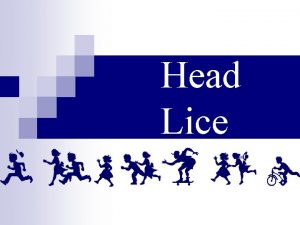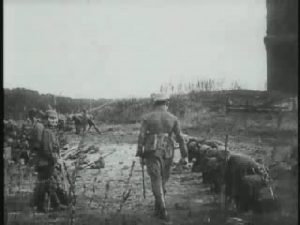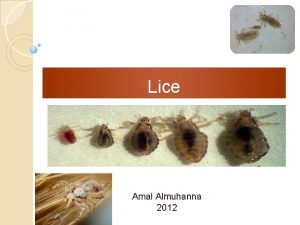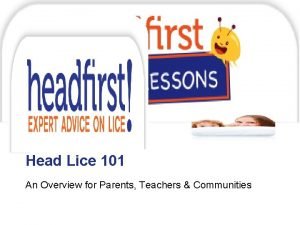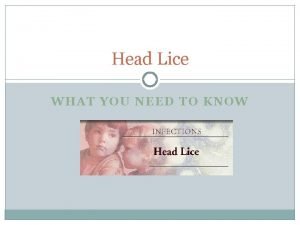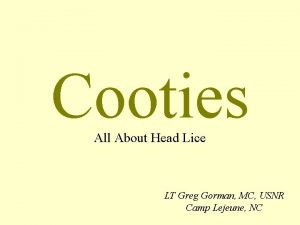Managing head lice What are head lice Head














- Slides: 14

Managing head lice

What are head lice? Head lice are: • small, wingless insects • pale grey or reddish brown • found on the human head • grow to the size of a pin head • live on the hair • feed by sucking blood from the scalp.

What are nits? Nits are: • the eggs of the head lice • glued to the hair shaft • found up to 1. 5 cm from the scalp.

How do you catch them? Head lice: • do not jump or fly • are spread by head to head contact • move by swinging from hair to hair.

Head lice lifecycle Eggs hatch in 7 -10 days It takes up to ten days for the nymphs to become mature. A mature female lays up to eight eggs per day.

Prevention is better than cure Do regular checks of your child’s scalp, esp. behind the ears and the back of the neck. Use the comb and conditioning method. Look for: • white eggs stuck to the hair • live head lice.

What to do if you find them Don’t panic. It doesn’t mean your child is dirty. If you find live lice, use a treatment.

2 types of treatment Comb and conditioning method Commercial treatments

Comb and conditioning method • can be used for detection and treatment of head lice and their eggs • is cheaper than commercial products • is gentle on the child’s hair and scalp.

Chemical treatments • are insecticides • come as shampoos, mousse or lotions • are available over-the-counter from a chemist • must be applied according to instructions • must be applied a second time after 7 -10 days.

Natural products The internet has a range of head lice solutions, but be wary. The use of home remedies are touted as ‘natural’, but some have been known to burn the skin, cause contact dermatitis and have not had medical trials to ensure their safety. Seek advice from a doctor or chemist.

Troubleshooting Possible reasons why the treatment hasn’t worked: • only one treatment has been applied • the head lice are resistant to the chemical • the product hasn’t been applied to all hairs • the product hasn’t been in contact with the head lice for the right amount of time • there is a new outbreak of head lice.

Troubleshooting It is recommended that EVERYONE in the family is checked ONCE A WEEK. By checking every week you will be able to manage a new head lice condition easily with conditioner and combing because you have caught the condition early and there will be fewer lice present.

Conclusion THANK YOU

